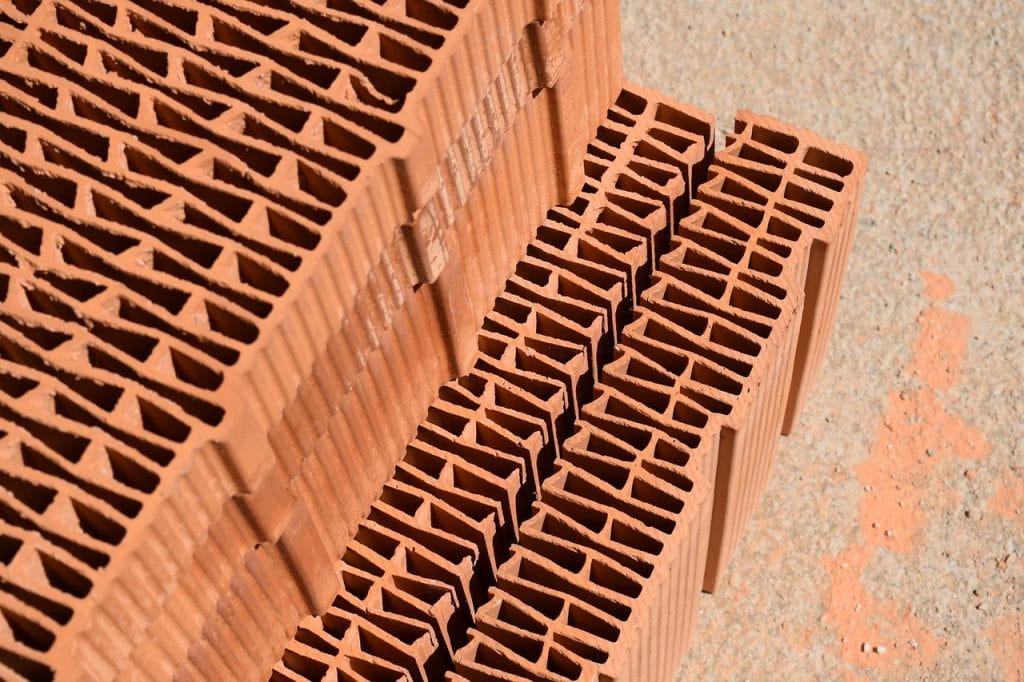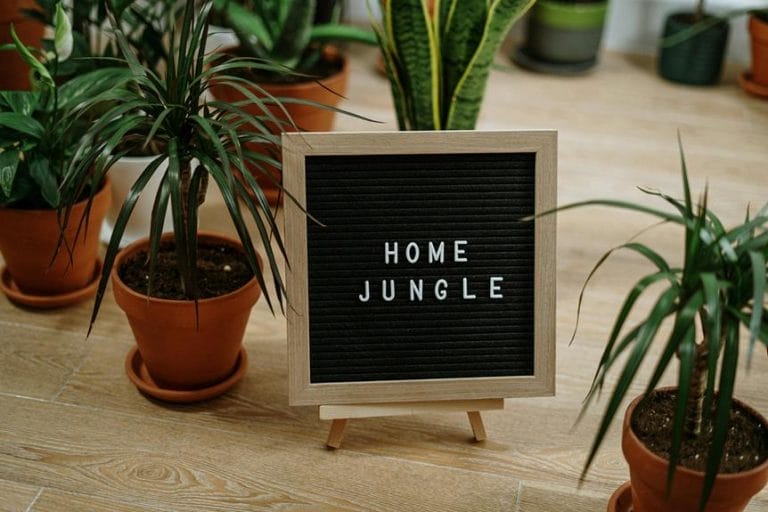Imagine this: a house constructed with hemp blocks. Sounds a little strange, doesn’t it? But believe me, this construction method is gaining more and more popularity in modern architecture. Hemp blocks, also known as lime hemp or hempcrete, are made from industrial hemp and lime. They possess several unique properties that make them incredibly interesting.
Why are more and more people choosing hemp blocks?
- Sustainability: Hemp is a renewable resource that grows rapidly and has minimal impact on the environment. This aligns perfectly with the trend of sustainable furniture, where people make conscious choices for their interiors.
- Health: The blocks are breathable and regulate moisture in the air, creating a healthier indoor climate. You can further enhance this by opting for a plant-based household. Not only does it improve your well-being, but it also contributes to sustainability.
- Insulation: Hemp blocks provide excellent thermal and acoustic insulation.
In this blog, we will explore the process of building with hemp blocks. We will delve into the advantages and disadvantages of hemp blocks, as well as some practical considerations to keep in mind. Whether you are considering new construction or renovation, this blog will help you determine if building with hemp is right for you.
What Are Hemp Blocks?
Hemp blocks are a unique and innovative building material, made from the woody core of the hemp plant. This core is mixed with lime and water, resulting in blocks that are not only lightweight but also strong and durable.
The production process starts with the harvesting of industrial hemp. The stems are shredded to separate the fibers from the woody core, also known as “hurds”. These hurds are then mixed with lime and water. A chemical reaction occurs, creating a strong bond that hardens the mixture. And that’s how you ultimately get sturdy hemp blocks!
The Benefits of Building with Hemp Blocks
Flexible and Strong
Hemp blocks are not only sustainable but also surprisingly flexible and strong. This makes them perfect for various construction applications. Let’s take a look at a few reasons why this flexibility and strength are so desirable in construction:
- Earthquake-resistant: Thanks to their natural flexibility, hemp blocks are an excellent choice for areas that are often affected by earthquakes. While traditional materials like bricks can crack or even collapse, hemp blocks remain standing better during shocks.
- Structural integrity: Despite being lightweight, hemp blocks provide impressive structural support. This means that you don’t have to compromise on safety and stability. You can build with confidence!
- Adaptability: Hemp blocks are easy to adapt to different architectural styles and specifications. This is ideal for architects looking for creative ways to incorporate sustainable materials into their designs. You can truly create something unique!
Insulating and Moisture-Regulating Properties
Insulation with hempcrete offers significant benefits regarding energy efficiency and a pleasant indoor climate:
- Hempcrete R-value: Hemp blocks are known for their excellent insulation value, also referred to as the R-value. This value is comparable to that of traditional insulation materials, meaning you can keep your house warm in the winter and pleasantly cool in the summer. How great is that?
- Moisture regulation: One of the special properties of hemp is its ability to regulate moisture. Hemp blocks can absorb excess moisture from the air and release it again when the air becomes drier. This creates a more stable and healthier indoor climate where you can truly feel comfortable.
- Thermal mass: Hempcrete has a high thermal mass, which means it can store heat and slowly release it. This helps minimize temperature fluctuations in the house, allowing you to enjoy a consistently pleasant temperature. What more could you want?

Environmental Impact
Did you know that building with hemp blocks is much better for the environment than many traditional construction methods?
- Carbon negative: Hemp plants are true superheroes when it comes to CO2 absorption. They absorb more carbon dioxide during their growth process than is needed for the production of hemp blocks. This makes them carbon negative, which is fantastic in the fight against climate change.
- Biodegradable: Unlike synthetic materials that often end up as harmful waste, hemp blocks naturally biodegrade. There are no harmful residues burdening our environment—just a return to nature!
- Renewable resources: Hemp grows rapidly, sometimes within 3 to 4 months! That makes it a renewable resource that does not contribute to deforestation or depletion of our planet.
Fire Resistance and Sound Insulation
Hemp blocks are not only a smart choice for the environment, but they also offer great benefits in terms of safety and comfort!
- Fire resistance: Did you know that hemp blocks have an impressive fire resistance due to their unique composition with lime? They are less flammable than wood and do not emit toxic smoke, which means they contribute to the fire safety of your home (isohemp). A reassuring thought, if you ask me!
- Sound insulation: Thanks to their solid density and clever structure, hemp blocks are ideal for sound insulation. This makes them perfect for busy urban areas, where noise pollution can sometimes feel like your worst enemy. With hemp blocks, you can enjoy your own space in peace.
Versatile and Easy to Use
Hemp blocks are truly versatile and incredibly easy to use:
- Easy to Cut and Shape: Unlike heavy materials such as concrete or brick, you can easily cut hemp blocks to size without the need for special tools. This not only saves time but also reduces costs!
- Perfect Combination with Other Materials: Hemp blocks seamlessly integrate with other building materials such as wood, steel, or concrete. This gives you the freedom to create unique and sustainable structures that perfectly match your vision.
- Lightweight and Manageable: Thanks to their lightweight nature, hemp blocks are easy to handle and install, making the construction process much simpler and reducing physical strain for builders.
The Disadvantages and Challenges of Using Hemp Blocks

Higher Initial Costs
Let’s be honest: building with hemp blocks can require a significant investment. The upfront costs for hemp blocks are often higher than those of traditional building materials such as bricks or concrete. This is mainly due to production costs and the relatively limited availability of hemp fiber in the market.
Why Are the Costs Higher?
- Production Process: Making hemp blocks is a labor-intensive process that requires specialized equipment and expertise. It’s not something you can easily do in your backyard!
- Raw Material Prices: Hemp fiber is currently not as widespread as, for example, wood or clay, which results in a higher price per unit.
However, let’s also consider another perspective. Although the initial investment may seem high, you need to take into account the long-term benefits. Hemp blocks offer numerous advantages, such as excellent insulation and durability, which can lead to significant energy and maintenance cost savings over time.
So, it’s a matter of weighing your options: are you willing to invest a little more now in a sustainable and environmentally friendly home that may save you money in the long run?
Time-Consuming
One of the disadvantages of hemp blocks is that the construction process can be quite time-consuming. Installing hemp blocks requires patience and precision, especially because each layer must dry properly before applying the next one. This can result in longer construction times compared to traditional materials like bricks or concrete.
The additional time required for building with hemp blocks often translates into higher labor costs. Moreover, hemp blocks may not be readily available everywhere, which also affects overall expenses.
However, there are companies, such as Dunagro Hemp Group, that have developed smart solutions like prefab hemp panels.
Specialized Knowledge Required
One of the other disadvantages of hemp blocks is that building with hemp blocks requires specific expertise. Traditional builders are often not familiar with the unique properties of hemp, such as its moisture-regulating function and the proper mixing ratios of lime and hemp fibers. This means that you may need to invest in specialized training or hire skilled professionals, which can result in higher costs.
In addition, the availability of experienced builders is limited, which can be a challenge when finding the right people for your project. Learning to work with these materials takes time and dedication, but the result can definitely be rewarding!
Structural Limitations
Although hemp blocks offer many advantages, there are also some structural limitations to consider. Take, for example, load-bearing capacity: it is often lower than that of traditional building materials such as brick or concrete. This may mean that you need to take additional measures to ensure that your building is sturdy enough. You may need to add some extra reinforcement or limit the height of the structure.
Furthermore, it is good to know that hemp blocks may be less resistant to moisture than conventional materials. Although they have a natural moisture-regulating function, prolonged direct exposure to moisture can still cause damage or expansion. This can lead to cracks or other issues in the construction, and of course, you want to avoid that!
Despite these disadvantages, hemp blocks can still be a sustainable and environmentally friendly choice, allowing you to enjoy your sustainable investment for years to come.
How Do Hemp Blocks Compare to Other Popular Building Materials?

When comparing hemp blocks to traditional building materials such as brick and concrete, there are some notable differences worth exploring.
Sustainability
Hemp blocks are highly sustainable due to their natural origin and the fact that they sequester CO2. In contrast, brick and concrete have a higher carbon footprint due to their intensive production process.
Insulation Capacity
The insulation properties of hemp blocks are impressive. They provide both thermal and acoustic insulation, which is an advantage over brick and concrete. These materials often require additional insulation to achieve the same energy savings.
Costs
While the initial costs for hemp blocks may be higher, the long-term savings on energy consumption and maintenance can offset these costs. Traditional materials such as brick and concrete are often cheaper to purchase but can be more expensive in terms of energy costs and maintenance.
New Construction versus Renovations
In new construction projects, hemp blocks offer a flexible and sustainable solution, especially for eco-conscious builders. In renovation projects, the use of hemp can be more challenging due to the need for adaptation to existing structures, but it can contribute to improved insulation and sustainability.
Where to Buy: Hemp Products for House Construction
Looking for information on hemp blocks for house construction? Here are some reliable sources and tips to get you started:
Reliable Sources
- Certifications:
- When purchasing hemp blocks, look for certifications such as CE marking and ISO certificates. These ensure that the product complies with European standards for safety and quality.
- Look for suppliers who are members of organizations such as the European Industrial Hemp Association (EIHA) or the National Industrial Hemp Council of America (NIHC). This provides additional assurance of the quality and sustainability of the products.
- Suppliers:
- HempFlax: One of the pioneers in the hemp sector, offers high-quality hemp products with a focus on sustainability and innovation.
- IsoHemp: Known for their special hemp blocks, they provide extensive technical support and detailed product information.
- HempEco Systems: This supplier focuses on environmentally friendly building materials and has a wide range of hemp-based products.
- Dunagro Hemp Group: Produces prefabricated hemp panels, so you can build smarter and faster and also be less dependent on rain.
- Du Chanvre: Offers complete development services for construction projects, specializing in building with hempcrete.
- Just Biofibre: A Canadian company that produces innovative, patented hemp building blocks. They use a stackable integrated frame, giving it the same strength as a concrete wall!
Purchasing Process
Conduct thorough research before making a purchase. Visit suppliers’ websites, read reviews, and if possible, request samples. This way, you can assess the quality yourself before making large quantities.
Another tip: Always ask for technical specifications and installation manuals. This not only helps with the construction, but also provides insight into how well the material is suitable for your specific project.
With this information, you have a good start in your search for reliable hemp products for house construction. Don’t forget that when designing a house with hemp blocks, you can also consider sustainable interior design.
Is Building a House with Hemp Blocks a Good Idea?
Building more sustainably with hemp is not just a trend, but also a step towards a greener future.
And not just hemp blocks, there are many more innovative, sustainable building materials that are receiving increasing attention and being used on a larger scale. Think of recycled bricks, bamboo, cork, and even insulation materials like sheep’s wool.
Hemp blocks are definitely a great option, especially because of their ecological benefits and strong structural properties.
But let’s be honest: just like with any other building material, it is super important to do thorough research and seek professional advice. This way, you can be sure that you are making the best choice for your specific project.
So, do you think you’re up for building your future new construction or renovation with hemp? Or is it still too far-fetched for you?
The answer to that question is naturally personal and depends on various factors. But with the knowledge you now have about hemp blocks, their benefits, and the bigger picture of sustainable construction, you can make an informed decision.
So go for it and create a home that is not only beautiful and functional but also contributes to a cleaner and greener world!



